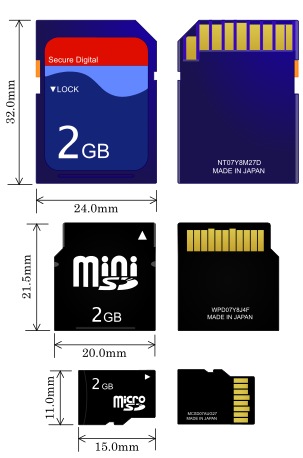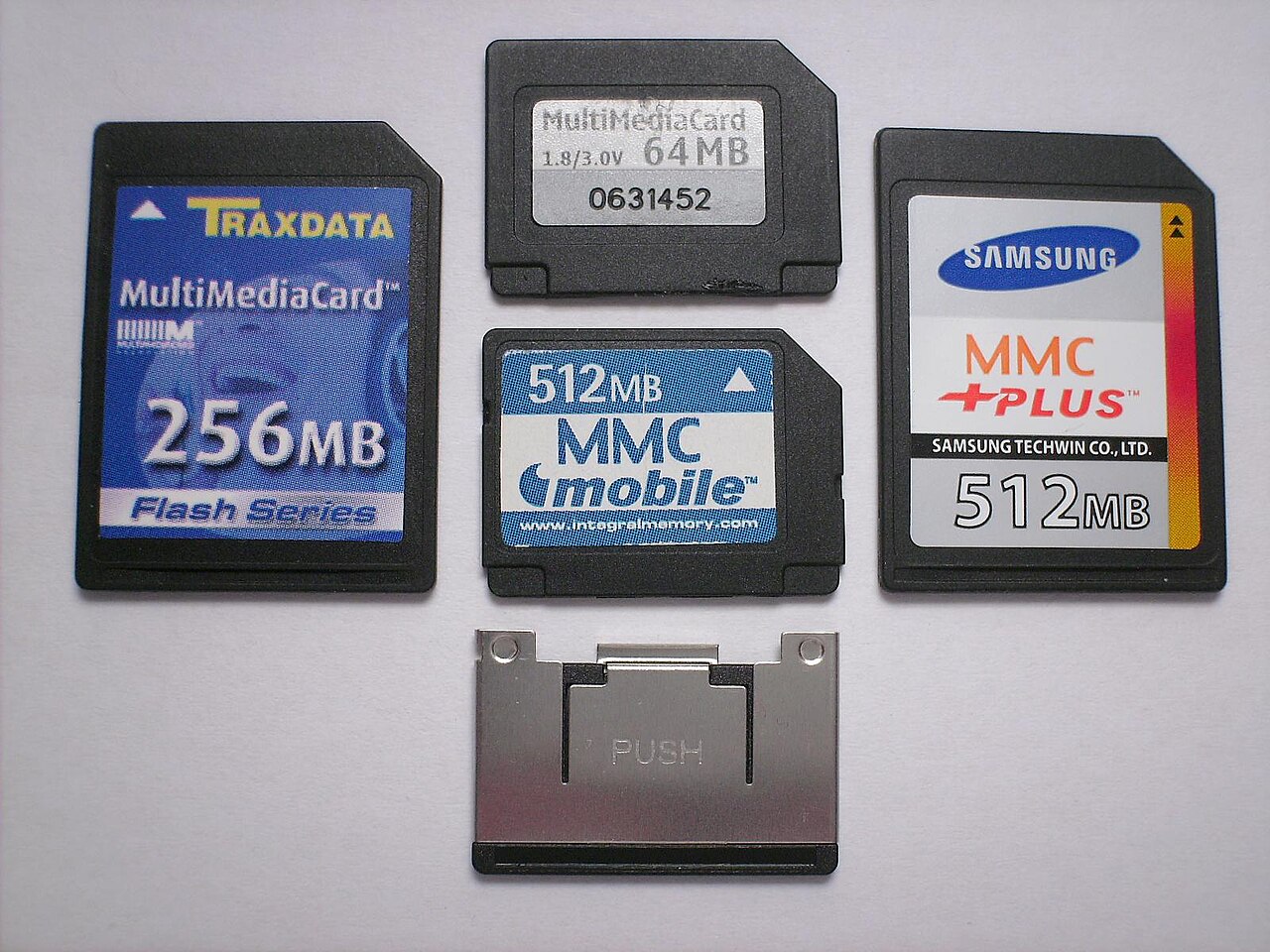In addition to the examples from the previous post, SSDs come in a number of other formats and flavours. The majority of these other formats are often used in devices that are external to personal computers such as mobile phones and digital cameras.
Compact Flash (CF) cards are a type of SSD that use flash memory. They are 43mm long by 36mm wide and, due to their relatively small size, they are typically used in portable devices. There are two types of CF card; Type 1 measuring 3.3 mm thick and Type II measuring 5 mm thick.
 |
| A CF card in a digital camera |
CF cards have a 50 pin contact and the latest versions are able to store up to 1 terabyte (TB) of data with transfer speeds of up to 1Gbps
CF cards are commonly used in the following devices
- Digital Cameras
- Music Players
- Personal Computing Devices
- Photo Printers
- Digital Camera Recorders
 |
| An 8Mb SM card (right) next to a Micro SD card (left) |
- Digital cameras
- Digital camera recorders
- Older models of personal digital assistants (PDAs)
 |
| A Fujifilm 16Mb xD Picture Card |
Memory Sticks (MSs) are another proprietary model of SSD, developed my Sony from 1988. They were designed primarily for use within Sony products such as VAIO laptops, Playstation Portable (PSP) devices and some of the earlier Sony Ericsson mobile communication devices. MSs can hold up to 16 Gb and have transfer rates of up to 2.5 Mbps (read) and 1.8 Mbps (write).
 |
| Different models of Sony MSs |
The Secure Digital (SD) Memory Card is possibly one of the best known and most popular forms of mobile SSD. Since the conception of the original SD card, there have been newer and smaller variants developed in order to follow the evolution of mobile communication and other devices. The miniSD card (approximately 2/3 of the size of an SD card) and the microSD (or TransFlash) card (approximately 1/2 the size of the original) have kept the SD card a commonly seen and used storage device.
SD Memory Cards are available in a number of capacities up to 2Tb and have data transfer rates ranging from 10 to 20 Mbps.
 |
| SD, miniSD and microSD cards |
SD (including mini and microSD) are used in many different devices, including:
- Laptops
- Digital Cameras
- Smartphones
- Handheld gaming devices
- Audio players
- Tablets
MultiMediaCards (MMCs) are another form of SSD but, unlike others, are commonly also compatible with SD card readers, making it possible to use them in many of the devices that can use SDs. MMC cards come in a number of different physical sizes and can hold up to 8 Gb. Data rates for MMC cards can rach up to 52 Mbps.
 |
| Tpes of MMC (clockwise from left) MMC, RS-MMC, MMCplus, MMCmobile, metal extender |
One thought on “Multimedia Card SSDs”